Education Indian music music: layakari practice riyaaz tintal
by Warren
3 comments
Meta
SiteMeter
Brighter Planet
The Half-Speed Switcheroo: Rhythmic Cycle Practice in Exhaustive Detail
Let’s go back into the problems of working within rhythmic cycles (too many climate-change letters makes a dull blog, I know).
One of the most productive strategies for practicing rhythmic awareness is the half-speed switcheroo (note: I am not a nomenclatural traditionalist, so if you need paramparik lingo you’ll be disappointed). In this type of practice, a composed line is moved in and out of half-speed, first at the most important points of the taal (in tintal, that would of course be sam and khali), then at secondary, tertiary and quaternary points.
Let me demonstrate.
We’ll continue working with the simple sargam composition in Bhoopali:

The melody begins at khali, so the first shift into half speed will happen there, too. I’m just going to notate the transform using the first line; you can do the second line yourself (or make your students do it). Paper notation is useful but not really necessary; it’s a very good exercise to go through every aspect of this without writing anything down, keeping it all in your head, ears, voice and hands.
Here’s the first half-speed changeup. After the 1/2 speed rendition of the melody concludes, we rejoin the piece at original speed. In this version, that means we reconnect at the beginning of the melody — but in subsequent versions, the junction will be elsewhere in the tune, creating more and more complex rhythmic displacements.

Each of these exercises (along with the ones I’m not going to write out, because it’s good for you to do it) should be sung with all the different types of clapping described at the bottom of this post. If you have a tabla machine, by all means use it…but not all the time. Some of the time, practice with vocalized tabla syllables, some of the time practice with just clapping, and some of the time practice with a partner who’s reciting taal for you.
After making the switch at khali, try making it at sam:
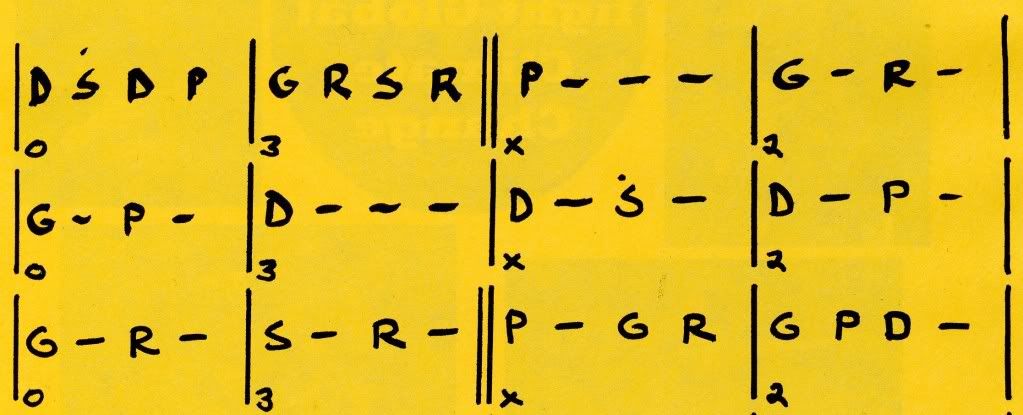
And then the secondary displacements, which start at beats 13 and 5 (the fourth and second vibhaags, respectively):
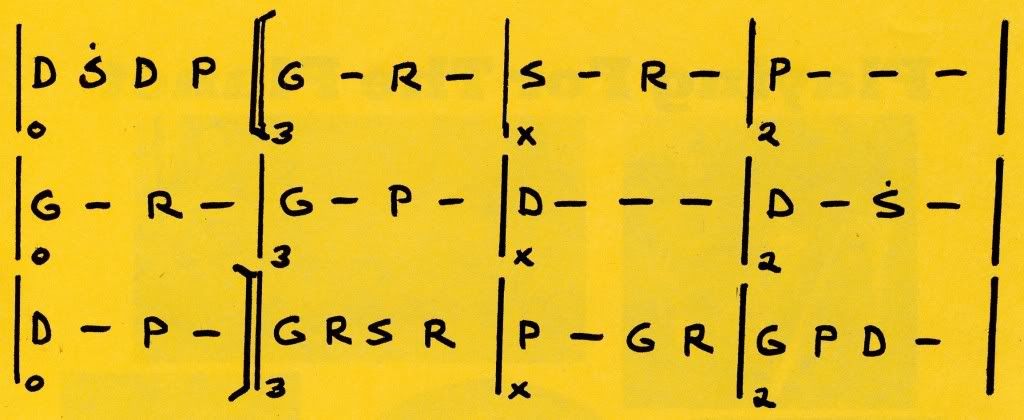

Now the primary and secondary displacements are complete. Don’t move on until you can shift easily in and out of each of these while keeping taal or doing any of the other clapping patterns.
There are four tertiary displacements, which happen on the third beats of each vibhaag of the taal. In this post, I’m only going to give you the versions starting at beat 11 (mid-point of the khali vibhaag) and beat 3 (mid-point of the sam vibhaag). Notice that the half-speed melody now crosses the vibhaag bar-lines for the two held notes.
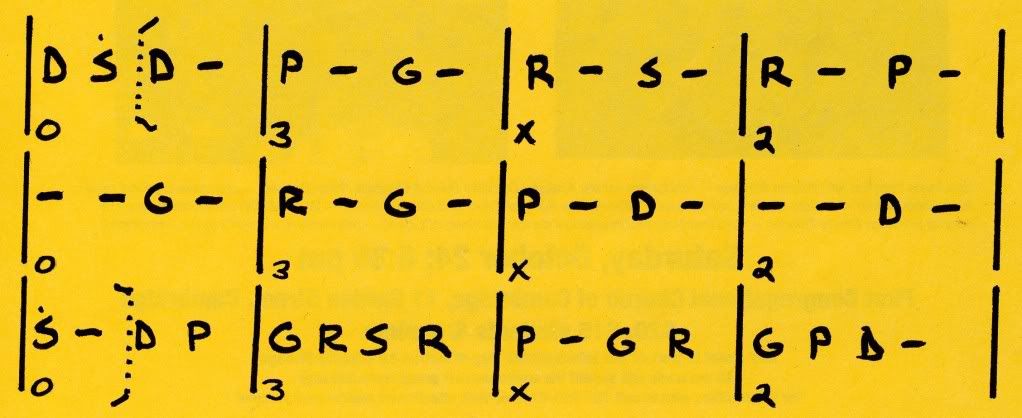
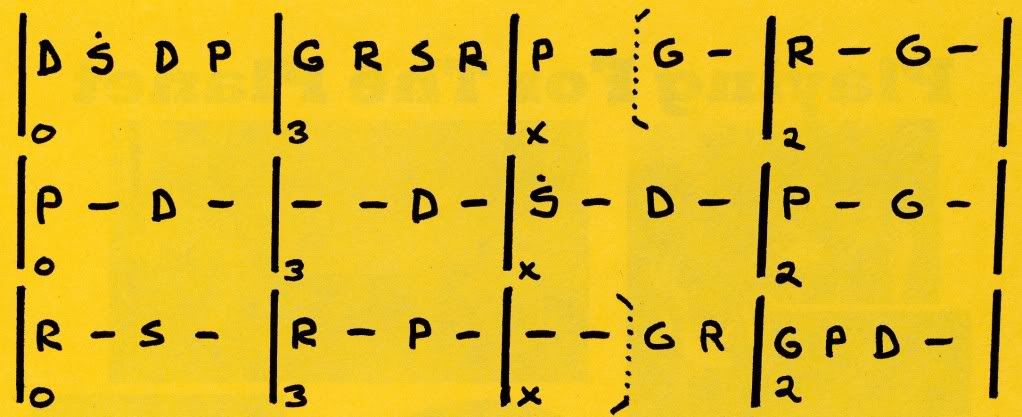
It wouldn’t be a bad idea to write out the remaining two tertiary displacements, which start at beats 15 and 7 respectively.
The quaternary displacements come in two flavors: starting on the second beat of each vibhaag, and starting on the fourth beat. In both cases the shift to half-speed makes all the notes in the melody off-beat — and consequently more difficult to sing.
Here are three of the quaternaries that start on the second beat, beginning with the one that begins immediately after khali (beat 10):
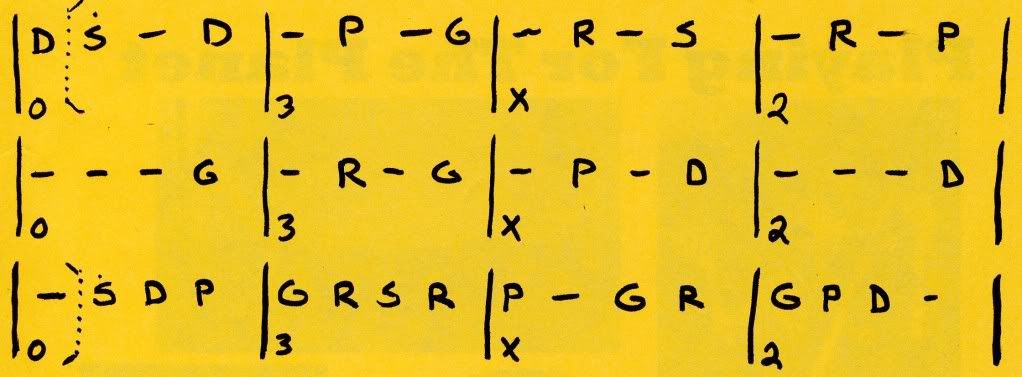
Beginning at beat 14:

Beginning at beat 2 (right after sam):
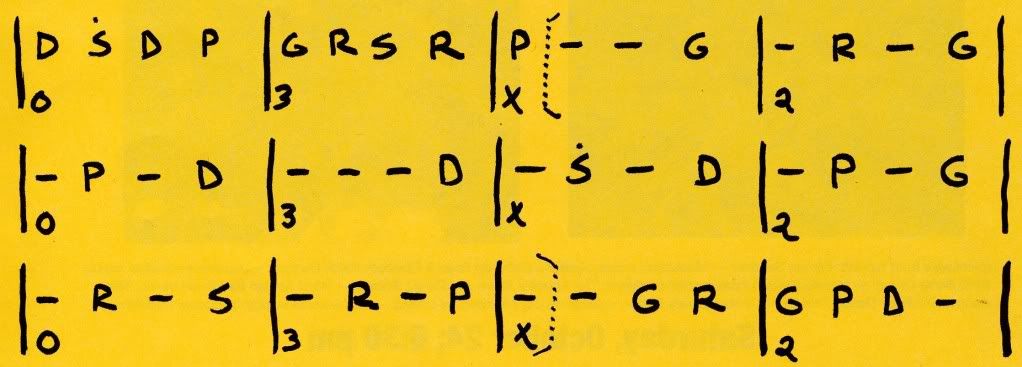
I’ll leave the last one, which begins at beat 6, for you to write out.
Here are three of the quaternaries that begin on the fourth beat of the bar, beginning with the last beat of the khali vibhaag (beat 12):
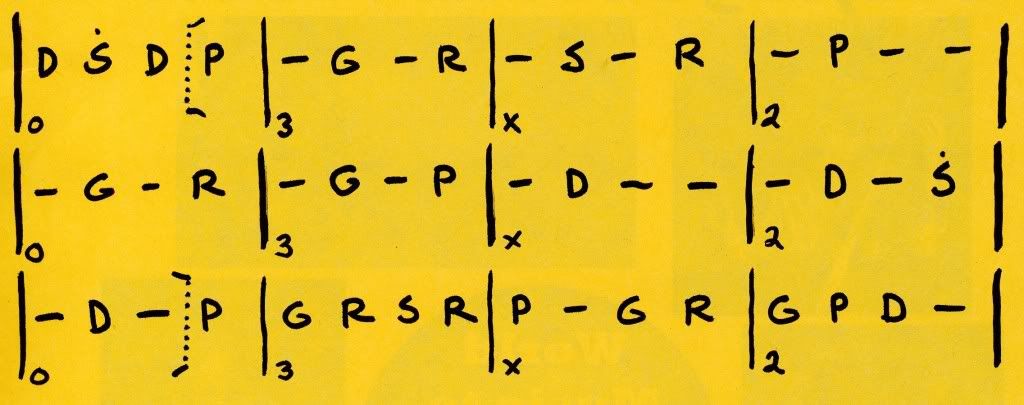
Beginning on beat 16 (just before sam):

Beginning on beat 4:

Note that on some of these, the half-speed version begins in the middle of a held note. For example, the version starting on beat 2 thus extends the Pa by an extra beat, creating a 3-beat note, something that didn’t occur in the earlier versions of this transform. Observe what happens as the line comes to an end: there’s another 3-beat note, this one starting a beat ahead of the sam.
————–
About clapping:
There are five important ways you can clap your hands while practicing this material (or practicing anything in tintal):
1. Every beat. Just hammering out matra after matra. Bang bang bang bang.
2. Every other beat. The first and third beats of each vibhaag.
3. Every fourth beat. This establishes the tempo of the vibhaags without the additional cognitive load imposed by trying to remember to make the wave at every khali.
4. The standard tala count: Clap / Clap / Wave / Clap. Because this is the standard for understanding the relationship of what you’re singing to the tala structure.
5. The “groove” clap. This is clapping on the first and fourth beat of each vibhaag, corresponding to every na stroke on the tabla. This clap gives a good sense of what a particular bandish or exercise actually feels like when it’s performed (although structural information is lost).
When you can sing through the complete set of half-speed switcheroos while shifting your clapping freely from any one of these five to any other…you’ll find your ability to navigate in tintal to be vastly increased!
Let me know how this works in practice for you.
Good night!
Finally, a word on a related subject.
If you’re studying or teaching music, you’re engaged in the long, slow, work of taking parts of our past and preparing them to travel into the future.
Therefore, you owe it to yourself and to the music you cherish — to educate yourself about climate change.
No stable climate – no music. It’s as simple as that.
MUSIC IS A CLIMATE ISSUE
Very nice articles sir. But recently http://www.photobucket.com is covering imp portion of your article which is irritating. I dont know how to get rid of it.
Thanks Warren Baba, Good instruction on music practice but please, more of your fantastic delicious, Karela Videos would be highly appreciated great for the laughter Rasa. Love, Chazz

It’s my problem due to Photobucket’s change of service. I’m gradually getting the photos re-uploaded…